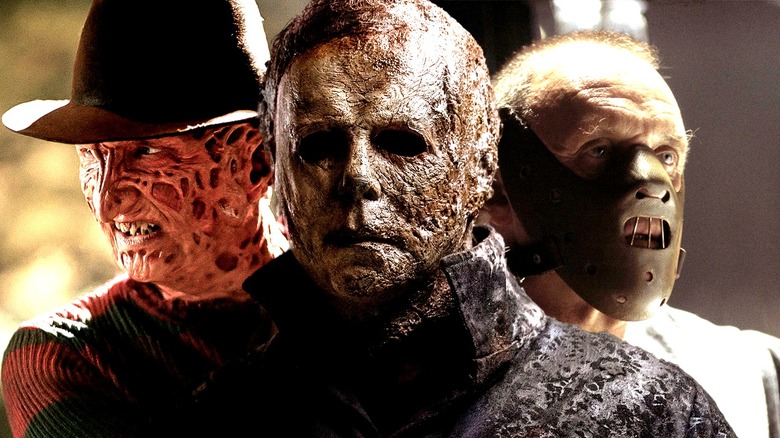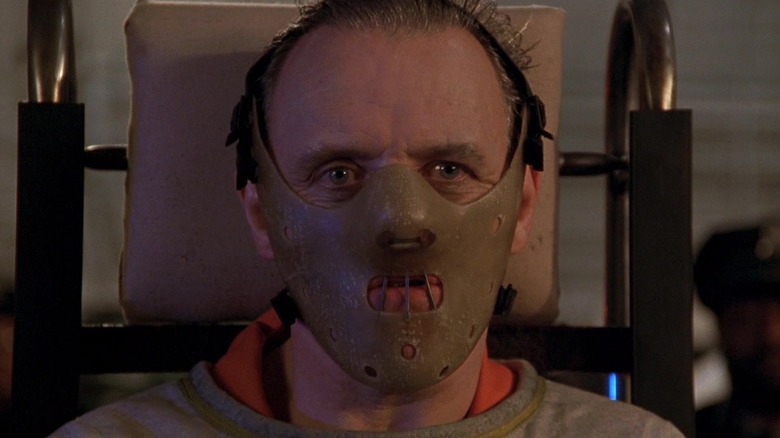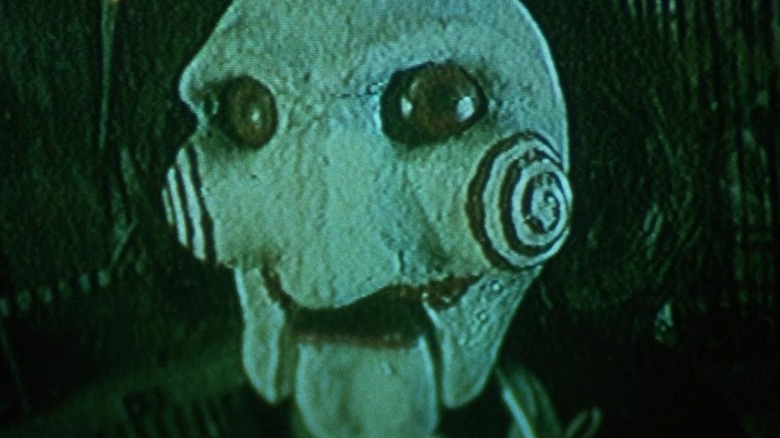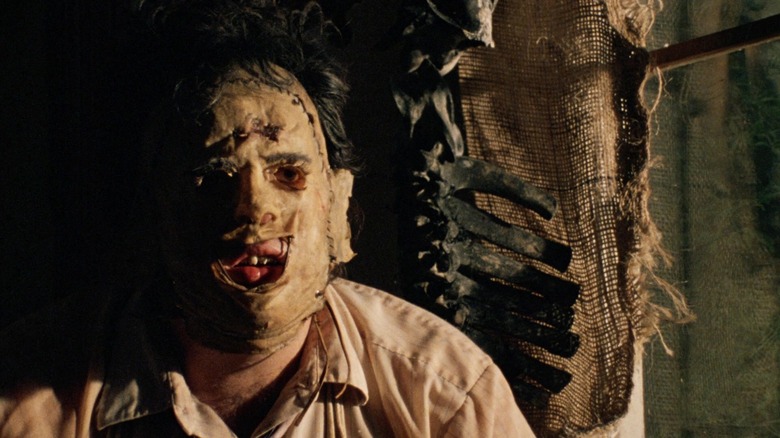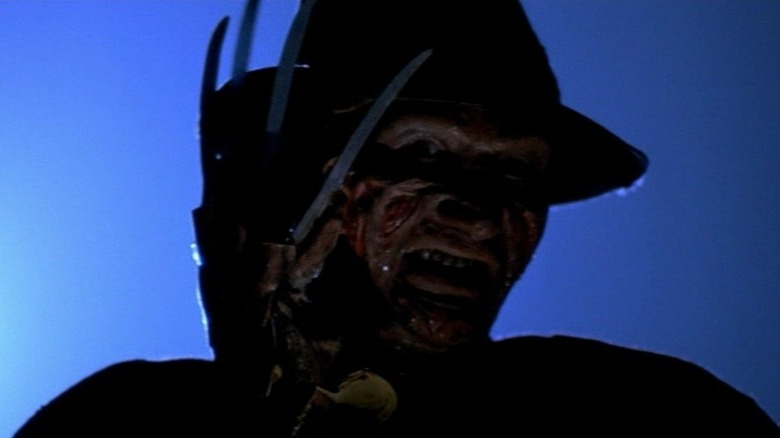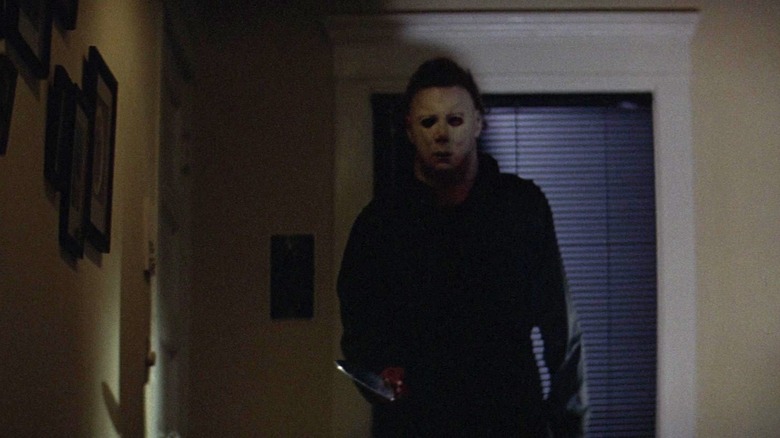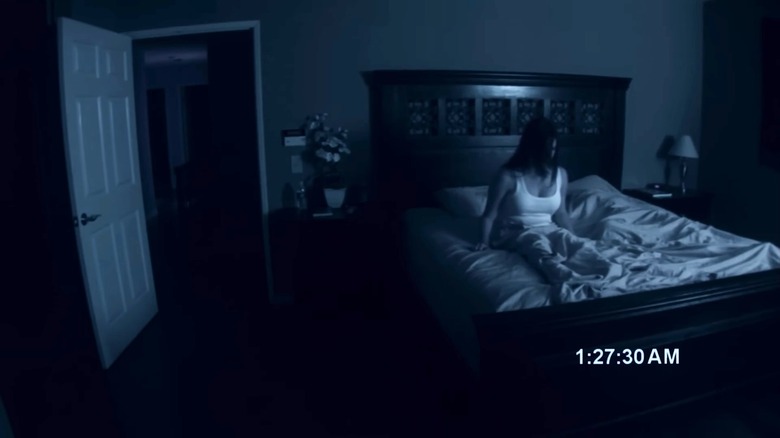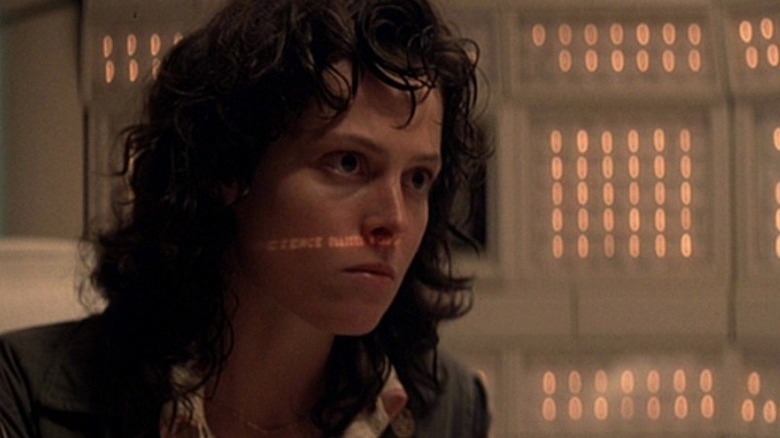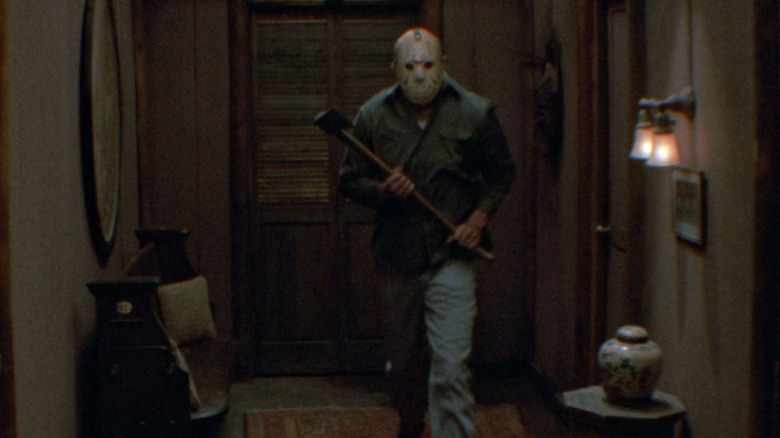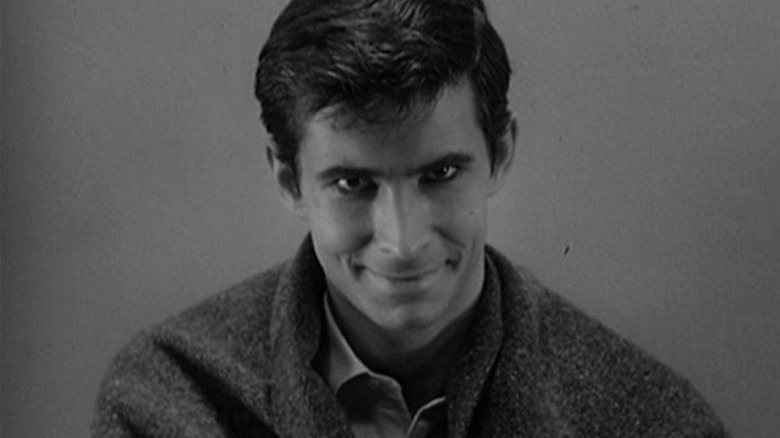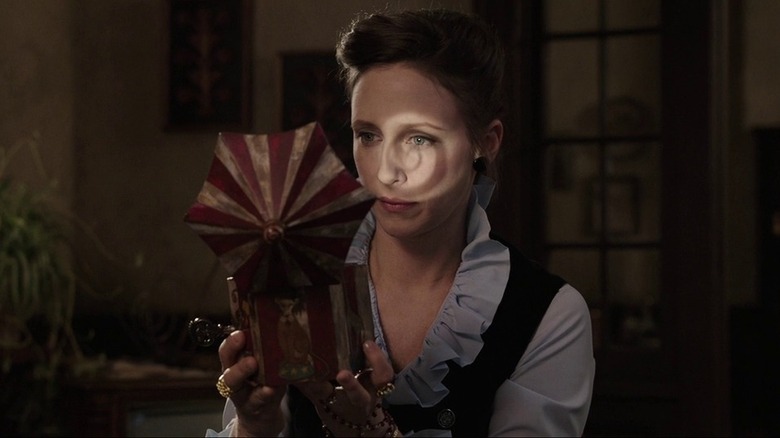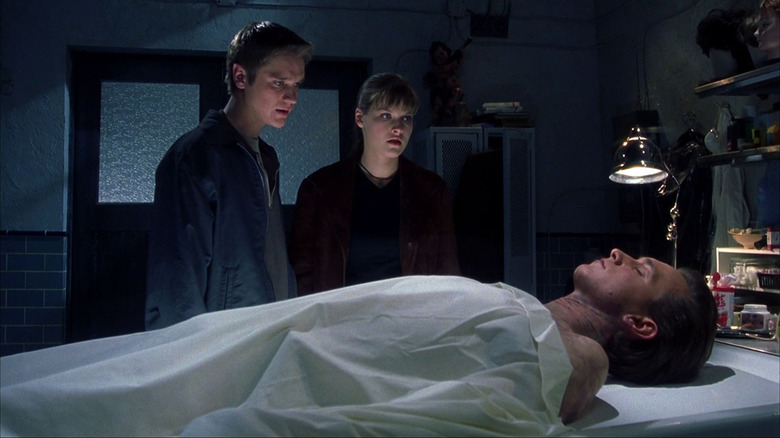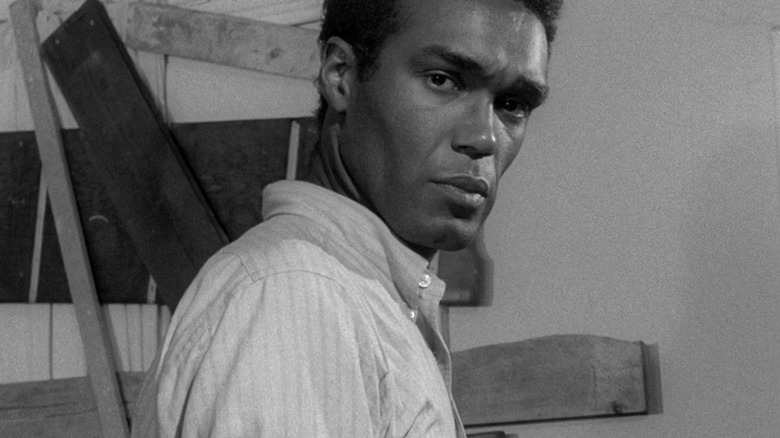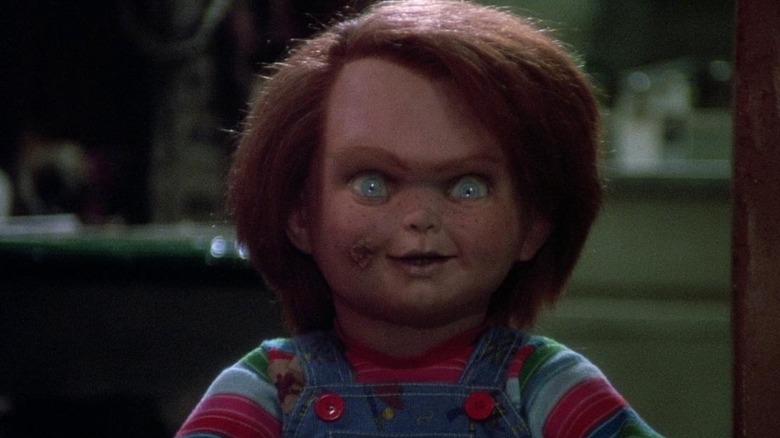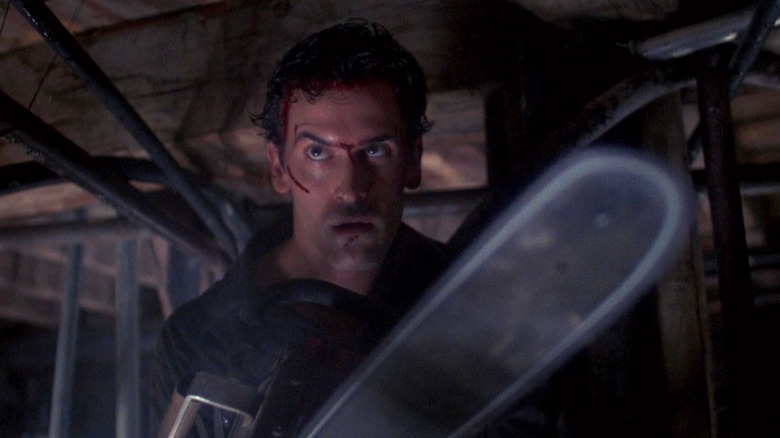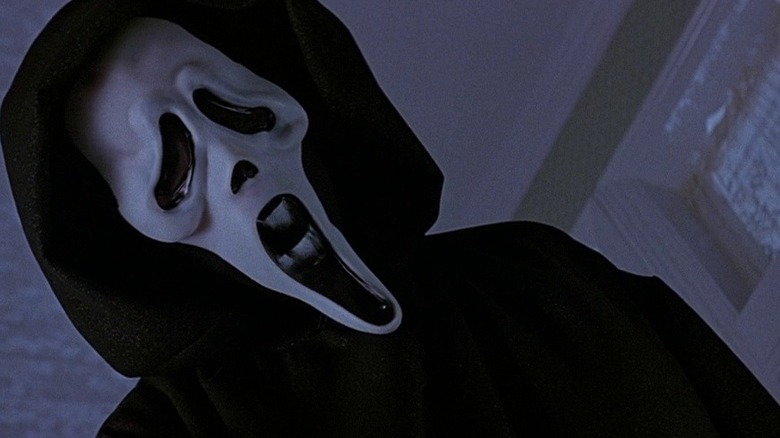The 15 Best Horror Franchises Of All Time, Ranked
According to /Film readers, the "Alien" film series is the greatest horror franchise ever. Yes, the xenomorph-starring series certainly has some strong films. However, it's not the most consistent (more on that later), so I disagree. Throughout horror history, sequels, remakes, and reboots have spawned franchises in sub-genres ranging from slashers to the paranormal. No IP is immune to a barrage of iterations. Sometimes, they work. Other times, well ... they leave much to be desired.
Whether we're talking heavy hitters like "A Nightmare on Elm Street" and "Halloween" or offbeat series such as "The Living Dead," there's always a franchise to gnash your teeth on as a horror fan. Ghoulish monsters, vengeful witches, cannibal serial killers, and disturbed sleep demons decorate our favorite storytelling medium with nightmare fuel. But they're not all created equal.
I'm revisiting some of the biggest franchises and have compiled the 15 best ones, ranking them based on effective scares, storytelling, and direction. The usual suspects appear, but there may be a few surprises, too! Flip through my picks, and let us know how wrong — or right — I am!
15. Hannibal Lecter
In his 1981 novel, "Red Dragon," author Thomas Harris introduced Dr. Hannibal Lecter to the world. While 1986's "Manhunter" was the first film adaptation of Harris' book, it generated little public interest. But "The Silence of the Lambs", based on Harris' 1988 sequel novel of the same name, raked in $130 million at the domestic box office – becoming a bona fide success. In "The Silence of the Lambs," Anthony Hopkins stars as Hannibal, alongside Jodie Foster as Agent Clarice Starling. Hopkins gave the character chilling new life, earning an Oscar for the role.
"Hannibal" picked up a decade after "The Silence of the Lambs," with Julianne Moore taking over the role of Clarice Starling — now a disgraced FBI agent. What made the film work so well was its willingness to try something different. It made a decent bid to live up to the original. However, the film series' two prequels, "Red Dragon" (2002) and "Hannibal Rising" (2007), stand at opposite ends of the quality spectrum. The former film more faithfully adapted Thomas' 1981 book. But the latter failed to achieve anything remotely creative or interesting. Later, a popular television series, "Hannibal," starring Mads Mikkelsen, course-corrected the franchise and offered up something delectable.
The Hannibal Lecter-starring franchise offered a probing glimpse into the mind of a cannibal. While it isn't ranked high on this list, it still became a prominent staple in the horror/thriller arena, successfully incorporating crime and pulpy mystery.
14. Saw
"Saw" debuted during the 2000s' "torture p***" era. Director James Wan employed the genre's gruesome portrayal of humanity, often through graphic mutilations, to dissect wickedness in the modern world. The initial film, written by Leigh Whannell, broke new ground for horror with its primarily one-location, intricate crime-thriller web, and mind-blowing twist. Yes, the film series gets more convoluted as it continues. But each film release became an almost-yearly ritual for horror fans to see the newest entry's inventive blood splatter.
Besides the allure of its central killer, John Kramer, aka Jigsaw (Tobin Bell), audiences flocked to the theaters to see the kill sequences. Each film felt more elaborate than the last. Whether depicting someone falling into a pit of needles, a demented merry-go-round, or a barbed-wire pig pen, the set-pieces set this series apart from other extremist films of this time like "Martyrs," "Hostel," and "High Tension." Viewers thirsted after the blood, brain matter, and dismembered body parts as much as they sought to discover why these deaths were occurring.
However, the non-linear storytelling hurt and muddled the "Saw" franchise timeline. From flashbacks shoehorned into the story and sequels that marred sequences of events, the "Saw" franchise is a puzzling watch if you're searching for consistency. But across its 10 films — with another on the way — there's plenty to enjoy if "torture p***" is your cup of tea.
13. The Texas Chainsaw Massacre
With the original 1974 "Texas Chain Saw Massacre," Tobe Hooper commented on the Vietnam War and its lingering effects on the boomer generation. 12 years later, "The Texas Chain Saw Massacre" traded its socio-political grittiness for outlandish camp with "The Texas Chainsaw Massacre Part 2." The franchise never adhered to a single-family dynamic, swapping out relatives like people change their socks.
When it fully celebrated the wacky — as it did with 1995's "Texas Chainsaw Massacre: The Next Generation," starring an unhinged Matthew McConaughey — it succeeded in deconstructing its mythos. For better or worse, it made bold moves. Even Leatherface has evolved throughout the series history. Sometimes, he's a senseless brute, and other times, they're a gender-busting maniac.
With the 2022 requel, "The Texas Chainsaw Massacre," the franchise centered itself with commentary on millennial gentrifiers who travel to small-time Texas and become slaughtered. Throughout its nine films, the "Texas Chainsaw" franchise never took itself too seriously. Don't expect to dig beneath its layers for any cultural text. Instead, enjoy the ride! Overall, it's a fun franchise — if not a total mess — with films perfect for midnight viewings.
12. A Nightmare on Elm Street
Wes Craven found inspiration for "A Nightmare on Elm Street" after reading a tragic story about a young teen who died in his sleep. A real-life terror begat one of the most gruesome mass murderers in horror: Freddy Krueger (Robert Englund). With a claw for a hand, Freddy haunted the dreams of Nancy Thompson (Heather Langenkamp) and her friends in the 1984 classic. While the slasher age was on its way out, the film injected the genre with an adrenaline boost. Throughout the '80s, four sequels dropped, as well as a short-lived TV series called "Freddy's Nightmares."
Freddy's initial reign of terror first came to an end with 1991's "Freddy's Dead: The Final Nightmare." Three years later, Craven returned to the franchise for "New Nightmare," a meta-slasher that saw Heather Langenkamp and Robert Englund play fictionalized versions of themselves. As teased at the end of "Jason Goes to Hell: The Final Friday," Freddy Krueger and Jason Voorhees eventually went toe-to-toe in an epic battle for 2003's "Freddy vs. Jason." The curtain seemed to finally close on the Freddy saga — until a remake landed in 2010.
The franchise started off strong before it moved away from what made it so special. Freddy transformed from a menacing sleep demon in the first three films to a paper-thin caricature most known for one-liners in later entries. Even the death sequences lost their appeal. If nothing else, the series is good for a chuckle, intentional or not.
11. Halloween
"Halloween" is like a choose-your-own-adventure book. It's got twists, turns, reboots, and remakes. But to its detriment, it could never stay on course. Much like "Psycho," John Carpenter's "Halloween" cemented many tropes we've come to expect in a slasher: It brought fear into everyone's backyard. Michael Myers embodied the idea of the Boogeyman watching you from afar. It was a totally terrifying horror reinvention. The simple formula of "Halloween" made the slasher easy to imitate and widely inspired the sub-genres boom in the '80s.
Of course, that meant that its sequels had to feature a higher body count, tons of gore, and intimacy (or at least the suggestion of promiscuity). Over the next four-plus decades, "Halloween" became one of the biggest box-office draws in horror history. Studios churned out 12 sequels, including the David Gordon Green reboot trilogy, which recently concluded with "Halloween Ends." Along the way, Michael Myers came under the spell of a Thorn, appeared on a reality TV show, and saw his backstory get a total "white trash" overhaul.
A franchise that began as a transcendent mile marker, "Halloween" morphed into a trend-chasing slasher franchise with nothing interesting to say. Sadly, it left its most compelling aspects — such as the mystique surrounding its antagonist — on the cutting room floor. Still, "Halloween" remains a cultural phenomenon and continues to define terror for several generations of horror fans.
10. Paranormal Activity
In 2009, the axis of the horror world shifted with the release of "Paranormal Activity." Not since 1999's "The Blair Witch Project" did a found-footage flick shock audiences in such an indescribable way. Fear found a new home with Katie (Katie Featherston) and Micah (Micah Sloat), and it wasn't going to take any prisoners. With its low-budget feel, the film proved that haunted houses could still be terrifying. Through the power of suggestion, it became a film that mercilessly put the audience in the front-row seat for one of the most unsettling found-footage films of all time.
In the vein of "Saw," sequels and a prequel were churned out almost yearly. Each offered strong scares, especially "Paranormal Activity 3" and "The Marked Ones," which wormed beneath the fingernails. What could or could not be lurking in the darkness was the series' greatest asset: It knew human imagination is the most frightening thing. Holding the monster back is far scarier than exposing it to the light. "Paranormal Activity" lets fear run rampant, and we were at the mercy of the filmmakers. We couldn't escape, but perhaps we didn't even want to try.
9. Alien
When you watch "Alien," a creeping sense of dread looms over the film — even when the xenomorphs are off-screen. There's something magical about Ridley Scott's creation's ability to make everything feel claustrophobic and earnest. The introduction of Ripley (Sigourney Weaver) gifted horror with one of its greatest, gun-toting protagonists. Unsurprisingly, the film sparked a decent franchise. I know what you're probably thinking: "Alien" isn't exactly horror. But it has all the hallmarks: terrifying imagery, carnage candy, and an overwhelming sense of panic.
As the series progressed, starting with the much-lauded "Aliens," action sequences became a crucial component of the film series. At times, these action scenes usurped the films' horror. Through the next two sequels, "Alien 3" and "Alien: Resurrection," the story becomes mangled with too many ideas — not to mention the bizarre presence of a Ripley clone.
I suppose points should be given for at least trying something different — even if those ideas were bungled in execution. Two prequels followed, but they never felt like "Alien" films. The same could be said for the two "Alien vs. Predator" movies. Versus situations — here's looking at you "Freddy vs. Jason" — never reach their full potential and instead read like milquetoast fan fiction. Still, "Alien" is one of the most popular horror franchises. The films are action-packed and bloody, and that keeps fans tuning in again and again. Here's hoping "Alien: Romulus" can deliver the horrific goods.
8. Friday the 13th
Speaking with Uproxx, screenwriter Victor Miller revealed that director Sean S. Cunningham sought to explicitly rip off "Halloween" with the creation of his own holiday-themed slasher. "Friday the 13th" riffed on slasher conventions laid out by its predecessor but upped the body count with way more blood. While infusing a whodunnit element, the 1980 film — starring Betsy Palmer as the vengeful matriarch Pamela Voorhees — became a box office juggernaut. The 1980 film jumpstarted one of the biggest horror franchises in history.
Jason Voorhees made his first appearance in the franchise in the 1981 sequel, "Friday the 13th Part 2" (that is, if you don't count the jump-scare nightmare of a child Jason that closes the first film). The film series dominated the '80s with six more sequels. No one could slow Jason down! But his end finally came with 1993's "Jason Goes to Hell: The Final Friday," putting him to rest for eight long years.
As with "Halloween" and "A Nightmare on Elm Street," "Friday the 13th" got weirder as the franchise continued. Jason fought a young woman with telekinetic powers, took a boat to New York City, went to space, and eventually warred Freddy Kreuger post-death. The franchise was nothing if not adventurous. Following a remake in 2009, the franchise went dormant due to ongoing legal battles between Cunningham and Miller. However, a forthcoming prequel series from Peacock is in the works, and while the franchise as a whole has many shortcomings – from bizarre premises to contrived storylines — they don't detract from its importance in slasher history.
7. Psycho
"Psycho" is the most underrated franchise. A proto-slasher, Alfred Hitchcock's 1960 film took terror from caves and castles into the modern era. Fear didn't manifest through ghouls, goblins, or witches but through a gentleman in a roadside motel. One scene in the film scared audiences and its star Janet Leigh from taking showers. With its slasher-setting foundation — from the butcher's knife to blood-spatter — "Psycho" turned horror into a tangible and unassuming threat.
It's hard to imagine a sequel living up to what the original did — but 1983's "Psycho II" served as a natural progression to the story. Years after the first film, Norman Bates' (Anthony Perkins) prison sentence is over. He confronts his past and attempts a fresh start. "Psycho III" and "Psycho IV: The Beginning," the latter featuring "Black Christmas" star Olivia Hussey, failed to achieve the same creative achievement as the first two films. However, later films deepened Norman's character study. Where "Psycho III" regurgitated plot points from the original while dishing up some excellent kills, "Psycho IV" fascinatingly glimpsed into an aging serial killer's head. When calling into a radio show, Norman revealed insight into his childhood through flashbacks.
"Psycho," as a whole, including the "Bates Motel" TV series, emerged as a worthwhile trip through a maniac's psychology — a more refined version of what the Hannibal Lecter films did. But Anthony Perkins' lead performance is far more effective. With suspenseful scares and brutal violence, this franchise leaves its peers in the rearview mirror.
6. The Conjuring
James Wan earned his place among the most masterful horror directors through his agility and genre fluidity. From "Saw" to "The Conjuring," he never offers a half-baked premise or idea. He commits to the work, so it's no wonder he's been crafting many of the best horror franchises in the past two decades. With "The Conjuring," Wan created a haunted world ripped from real-life accounts of ghosts. Most of "The Conjuring" adapts the reported Perron Family haunting, following the work of paranormal investigators Ed (Patrick Wilson) and Lorraine Warren (Vera Farmiga).
Technically, "The Conjuring" doesn't stop with its main three films. Wan used the Warren characters — and their cursed objects — to spawn a cinematic universe, including three "Annabelle"-centric installments, "The Nun," and "The Curse of La Llorona." Sure, the quality of these films dips here and there, but that's the case for most franchises on this list.
Overall, there are far more home runs here. With a polished mainstream appeal, the franchise delivers jump-scares that always serve the story. Sadly, jump scares get a bad rap from certain corners of the internet. But "The Conjuring" made jump scares vital. If it weren't for "The Nun" and "The Curse of La Llorona," two mediocre entries, the series would rank even higher here.
5. Final Destination
"Final Destination" retooled slasher conventions and up-ended modern horror. The killer wasn't some unknown assailant in a mask running around with a knife. Teens were running from death itself. The series totals five films so far, and each entry proposes existential inquiries into what it means to die. Despite death being an inevitable part of life, we don't like to talk about it much. The franchise's willingness to get real has been part of its charm since its 2000 inception. Of course, audiences also tuned in to the "Final Destination" series for the elaborate kill sequences: Each entry upped the stakes and its body count. Even mundane actions could unwittingly trigger one's demise. Death by elevator, tanning bed, nail gun, and Buddha statue just scrapes the surface of the series' best set pieces.
Even at its weakest — looking at you, "The Final Destination" — the series outpaces most of its contemporaries. From actor appearances that include Devon Sawa, Mary Elizabeth Winstead, and Tony Todd to charming character performances, "Final Destination" earns a higher ranking on this list than you might expect. Yes, it's gruesome. But there are plenty of emotional arcs to anchor each installment's elaborate death sequences. This franchise gives us a raw peek into humans' desperation to avoid death. Above all else, it surely will make you squirm in your seat!
4. The Living Dead
In 1968, George A. Romero forever changed the horror landscape with "Night of the Living Dead." While zombie films were not a new conceit — 1932's "White Zombie" is known as the first-ever zombie flick — the 1968 film popularized zombies as a modern premise. Essentially, it kicked down the door to craft the massive zombie subgenre we have today. We wouldn't have things like "The Walking Dead" or "World War Z" without its monumental spin on zombie lore. But what's even more important is taking a look at how the film spun a franchise.
Across five sequels, Romero expanded the film's story. From 1978's "Dawn of the Dead" and 1985's "Day of the Dead" to 2007's "Diary of the Dead," each entry stands on its own two feet in terms of story and execution. The subsequent entries follow separate characters and locations amidst a zombie apocalypse. Between a shopping mall, an underground bunker, and a lavish mansion, Romero explored how different human beings reacted to and survived an outbreak. Every step of the way, the filmmaker delivered on the promise. Surprisingly, the sequels more than live up to the original film. Look, Romero was never going to outdo himself and surpass the original film. Still, his work displayed great attention to creating solid stories and characters. In the final moments of "Diary of the Dead," a character asks the audience whether humanity is worth saving: There lies Romero's franchise thesis. So, dear reader, are we worth saving?
3. Child's Play
Chucky is the MVP of killer dolls. Voiced by Brad Dourif, the pint-sized freak slashed his way into our hearts way back in 1988. "Child's Play" came way late in the slasher boom. You could argue slashers weren't even cool anymore. But like any legend, Chucky changed the game. He was as bloodthirsty as Michael Myers with Freddy Krueger-worthy-like quips. He knew how to blindside his victims and get the upper hand, quickly earning his place on the Mount Rushmore of horror icons.
It's not surprising Chucky sparked a film franchise and popular TV series. With "Child's Play 2," Chucky was given even more of a joking personality, but it didn't sacrifice the film's scares. Creator Don Mancini struck a goldmine. From "Bride of Chucky," the much-maligned "Seed of Chucky," and "Curse of Chucky," Mancini perfectly sculpted a horror-comedy franchise.
As outlandish as the films become, Mancini always poured heart into the story and got committed performances from his cast. After the release of "Cult of Chucky" in 2017, everybody's favorite plastic plaything took to SyFy for a TV series with an even higher body count and way more mayhem. Save for the 2019 remake, the series never missteps its continuity and achieves what few other franchises do: consistency.
2. The Evil Dead
"The Evil Dead" is like a box of chocolates. You just never know what you're going to get! Each installment has its unique set of spooky tricks and treats, presented in wildly different tones and approaches. If you're itching for more straightforward horror, the 1981 film will satiate you. If bloody camp is more your speed, I suggest "Evil Dead II" or "Army of Darkness" — though the latter forged deeper into comedic territory with Ash Williams (Bruce Campbell) delivering some of his most iconic zingers.
If truly grotesque is what you're seeking, the 2013 remake will shock your system. Telling the story of a young woman undergoing detox at a secluded cabin, the film paid homage to the original while carving a uniquely terrifying vision. Then there's 2023's "Evil Dead Rise," a wild ride set in an apartment complex where a family must band together or wind up horribly mutilated by the villainous Deadites.
Regardless of your appetite, "The Evil Dead" never shortchanges the audience. There are buckets of blood, decaying bodies, and severed limbs. Reportedly, 50,000 gallons of fake blood were used in the 2013 remake. And if you're wanting more Ash Williams in your life, you can also check out the freakishly fun series "Ash vs. Evil Dead."
1. Scream
No other horror franchise is as consistent as "Scream." Loosely based on the Gainesville Ripper, the 1996 original flipped the horror genre on its head with playful meta-ness and fang-toothed teardown of genre tropes. Plus, our central protagonist Sidney Prescott (Neve Campbell) redefined what it meant to be a Final Girl. Even though he was essential in cementing horror conventions, Wes Craven knew exactly how to shatter them and remold them for a new generation.
When "Scream" became a blockbuster success, sequels were inevitable. "Scream 2" and "Scream 3" did all the things sequels should do — upped the body count, delivered more elaborate kill sequences, put the central characters in actual danger, and involved a "preponderance of exposition," as Randy (Jamie Kennedy) put it best.
The franchise then laid dormant for 11 years before returning with "Scream 4," showcasing Craven's commentary on horror's remake craze. Following his death, the franchise lay dormant until 2022. With 2022's requel "Scream," the story veered away from Sidney. Instead, it refocused attention on a new crop of characters. "Scream VI" followed a year later and once again delivered the goods with strong character work, more blood, and elevated (quite literally) set pieces.
"Scream" is the rare franchise that is miles ahead of its competition — even on its worst day. You can't kill Ghostface, after all.
